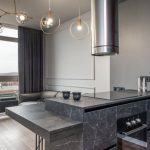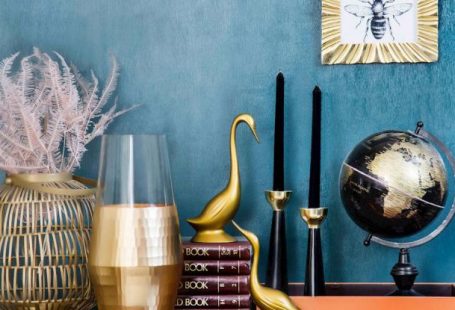Smart Home Tech: The Fusion of Functionality and Aesthetics
In the realm of technology, the concept of smart home devices has become increasingly popular as more people seek convenience, efficiency, and connectivity in their living spaces. From smart thermostats to voice-activated assistants, these gadgets offer a range of benefits that enhance the way we interact with our homes. However, one question that often arises is whether smart home tech can be aesthetically pleasing. Can these devices seamlessly integrate into our interiors without compromising on style? Let’s delve into this intriguing intersection of technology and design.
Harmonizing Form and Function
At the core of the debate on smart home tech and aesthetics lies the challenge of harmonizing form and function. Traditional devices often prioritize functionality over design, resulting in clunky, utilitarian gadgets that stand out like sore thumbs in well-curated spaces. However, the advent of smart home technology has brought a new wave of products that blend cutting-edge functionality with sleek, modern design. Companies are increasingly recognizing the importance of creating products that not only perform well but also complement the aesthetics of a home.
Seamless Integration
One of the key factors in determining whether smart home tech can be aesthetically pleasing is its ability to seamlessly integrate into the existing decor. Ideally, smart devices should be seamlessly incorporated into the design of a space, rather than appearing as intrusive add-ons. This can be achieved through thoughtful product design that considers elements such as size, shape, color, and material. By blending in with the surroundings, smart home devices can become virtually indistinguishable from other decor elements, creating a cohesive and visually appealing environment.
Minimalist Design
The rise of minimalist design trends in interior decor has also influenced the development of smart home technology. Many manufacturers are embracing clean lines, simple shapes, and neutral colors to create products that exude a sense of elegance and sophistication. By adopting a minimalist design ethos, smart home devices can complement a wide range of interior styles, from modern and contemporary to Scandinavian and industrial. This versatility allows homeowners to integrate these gadgets seamlessly into their spaces without disrupting the overall aesthetic.
Customization Options
Another aspect that contributes to the aesthetic appeal of smart home tech is the availability of customization options. Many manufacturers offer a variety of finishes, colors, and materials to cater to different design preferences. This level of customization allows homeowners to personalize their devices to suit their individual tastes and complement their existing decor. Whether you prefer a sleek black finish to match your minimalist living room or a pop of color to add a playful touch to your kitchen, the ability to customize smart home devices makes it easier to achieve a cohesive and visually pleasing look.
Blending Technology and Nature
Incorporating natural elements into smart home design is another trend that has gained traction in recent years. By combining technology with natural materials such as wood, stone, and plants, designers are able to create products that not only look beautiful but also evoke a sense of harmony and tranquility. For example, smart speakers housed in wooden enclosures or planters with built-in watering systems are innovative solutions that bring a touch of nature into the home while seamlessly integrating technology.
Creating a Unified Ecosystem
One of the challenges of incorporating smart home tech into a living space is the potential for a disjointed and cluttered look. With multiple devices vying for attention, it can be difficult to maintain a cohesive and harmonious aesthetic. To address this issue, many homeowners are opting to create a unified ecosystem of smart devices that work together seamlessly. By choosing products from the same brand or ecosystem, it is possible to ensure a consistent design language and user experience throughout the home.
Embracing the Future
As smart home technology continues to evolve and become more integrated into our daily lives, the question of aesthetics will remain a critical consideration for designers and manufacturers. By prioritizing thoughtful design, seamless integration, minimalist aesthetics, customization options, and a harmonious blend of technology and nature, it is possible to create a home environment where smart devices not only enhance functionality but also contribute to a visually pleasing and cohesive design scheme. With the right approach, smart home tech can indeed be aesthetically pleasing, ushering in a new era of harmonious coexistence between technology and design.





